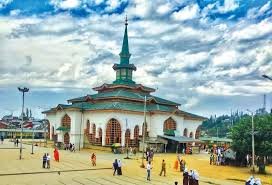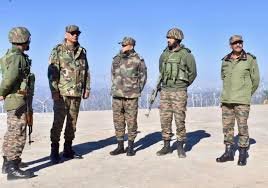Charar-e-Sharief (Budgam), July 27, 2025 : Three decades after the devastating 66-day siege of the Charar-e-Sharief shrine, the people of this ancient Kashmiri town continue to live with the emotional and physical scars left by the 1995 terror attack. Yet, the enduring spirit of Sufism and resilience keeps Charar-e-Sharief moving forward.
On May 11, 1995, the siege ended in tragedy when trapped terrorists set fire to the 14th-century shrine of Sheikh Noor-ud-din Noorani (Nund Reshi)—Kashmir’s most revered Sufi saint—along with the adjoining mosque and much of the surrounding locality. Thousands were displaced, and the historic town was reduced to ashes.
Witness to Horror
Ghulam Hasan Khadim, a local resident, still trembles at the memory of Pakistani terrorist Mast Gul, who, in an act of brutal intimidation, shoved a grenade into the mouth of Noor Mohammed Fateh Khan, an elderly man who tried to talk sense into the militants.
“Mast Gul told him there was no scope for negotiation,” Khadim recalls. “It was horrifying. Many of us watching from the boundary wall were left shell-shocked.”
Gul, believed to have escaped during the chaos under cover of fog and rain, vanished into Pakistan-occupied Kashmir, leaving behind a town in ruins.
Faith Through Fire
Despite the devastation, Charar-e-Sharief’s spiritual fabric remains unbroken. The shrine, revered by both Muslims and Kashmiri Pandits, has become a symbol of divine protection.
“People believe the shrine absorbed the calamity to shield the rest of the town,” Khadim says. “Our faith only grew stronger.”
Former J&K DGP Kuldeep Khoda said the attack on Charar was a calculated strike against Kashmir’s Sufi identity by Pakistan-backed terror outfits.
“The Charar shrine was a thorn in the side of radical forces. The ISI wanted to destroy the essence of Kashmiri Sufism—and this attack was part of that plan,” Khoda asserted.
He also pointed to the JKLF’s 1990 ‘Charar Chalo’ campaign, which aimed to turn the town into a militant stronghold.
Unhealed Wounds
The town is still grappling with incomplete rehabilitation, and many homes destroyed in 1995 remain unrestored. Ghulam Qadir Beidar, then 32, remembers the entire area being sealed off for 66 days.
“Top army officers and the administration pleaded with the militants to vacate peacefully—even offering safe passage—but they refused,” he said.
In 2015, terrorists attacked again, lobbing a grenade at women devotees, reminding residents that Charar remains a target for extremist forces.
Delayed Reconstruction and Fresh Discontent
While the main shrine’s reconstruction is ongoing, the adjacent mosque—rebuilt after the 1995 fire—was recently declared unsafe and closed by the LG administration, following an NIT inspection. Residents allege substandard construction and have demanded a probe into misuse of funds.
“How can a new mosque become unsafe so soon, after so much public money was spent?” asked a concerned local. “We request the Lieutenant Governor to intervene and order an inquiry.”
The Legacy Lives On
Charar-e-Sharief, just 28 km from Srinagar, remains a powerful symbol of Kashmir’s pluralistic and Sufi heritage. Despite terror attempts, fires, and political neglect, the town continues to draw strength from its history, its people, and its saint.



















